Wildlife
Georgia only has about 90 miles of coastline, but holds approximately one-third of the entire Atlantic seaboard's marshland, meaning the Golden Isles has ample and diverse habitats for birds and marine life alike, and is a major migratory stop for wildlife. Large areas of old growth maritime forests on the islands create tree canopies for habitat and make for an absolutely unique and beautiful setting unlike any other on the east coast. These distinctive settings throughout St. Simons Island, Sea Island, Jekyll Island, Little St. Simons Island, and Brunswick provide habitats for a wide variety of Georgia's wildlife that you won't want to miss on your next visit.
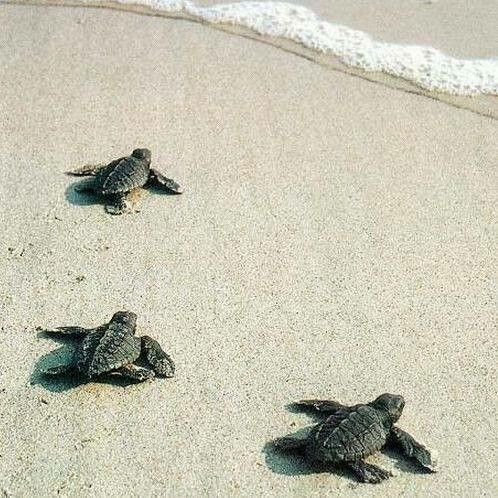 Sea Turtles
Sea Turtles
Though usually seen at night, loggerhead sea turtles have, for centuries, found the beaches of the Golden Isles a preferred spot for laying their eggs. Preferring drier habitats to burrow into, gopher tortoises can often be found in the sand dunes on Golden Isles beaches.
How you can help protect Georgia’s sea turtles:
• Do not use lights on the beach at night
• Never disturb a sea turtle that is crawling to or from the sea.
• Once a sea turtle has begun nesting, observe only from a distance.
• Do not shine lights in a sea turtles eyes or take flash photography.
• Do not touch or disturb nests or hatchlings.
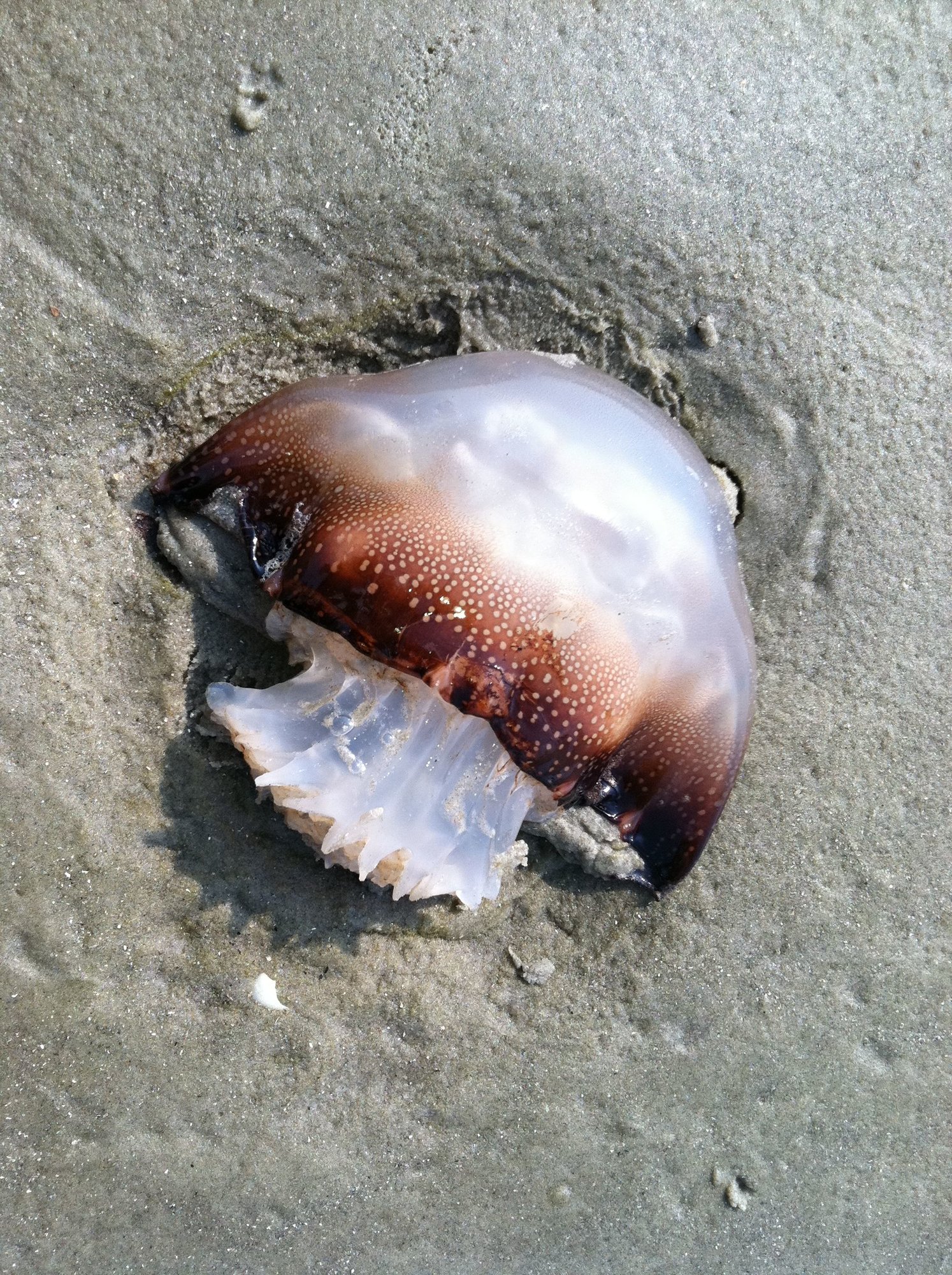 Jellyfish
Jellyfish
Cannonball Jelly
The most common jellyfish on St. Simons Island are Cannonball Jellyfish; they are found year round . They are ball-shaped and feel more like rubber or plastic instead of soft and mushy. Cannonball Jellies don’t have any long tentacles that sting, so they are fairly harmless.
Lion's Mane Jelly
During the winter we have a couple of cold-water species: the Lion's Mane Jelly, and the Mushroom Jelly. The Lion’s Mane has a very mild “sting”. The Mushroom Jelly is our largest jellyfish, but it doesn’t sting.
Moon Jelly
Moon Jelly are flat, round, and clear. You can identify a Moon Jelly by the four “horseshoe shaped” canals around the middle. Moon Jellies have fairly short tentacles, and they produce a relatively mild sting. They are also bioluminescent and produce light by a chemical reaction happening within their bodies.
Sea Wasp Jelly
It’s usually during late July and into mid-August when we spot the Sea Wasp Jellyfish. They are clear and have long, hair-like tentacles. The Sea Wasp Jellyfish sting can be lethal. Because they are clear, you usually can’t see them in the water. But even when they have washed up on the beach, their tentacles can still sting.
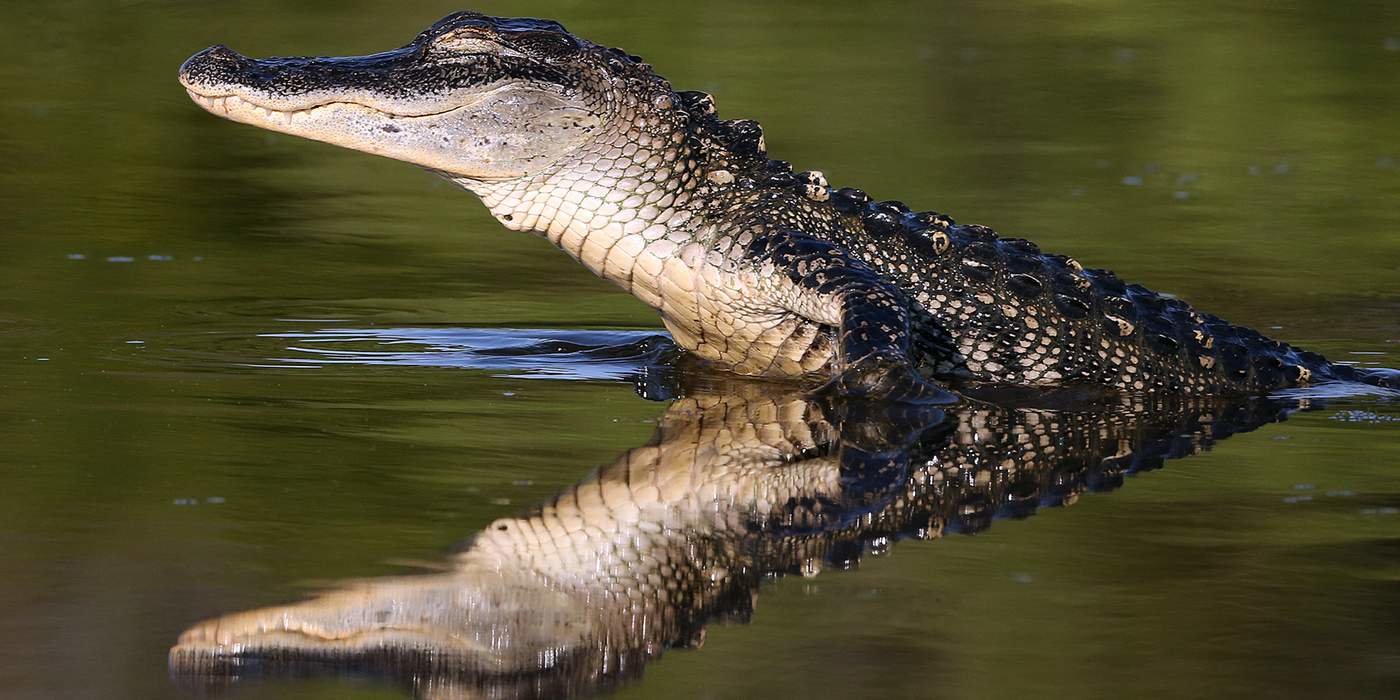 American Alligator
American Alligator
Habitat: Marshes, swamps, rivers, ponds, and lakes; also sometimes found in ditches, neighborhoods, drainage canals, golf course ponds, and swimming pools.
Description: A large aquatic reptile with short, thick legs, a powerful tail, and a rounded body. Adults are dark gray and young have distinct yellow bands on the body and tail.
Size: Adult male American alligators measure 11 to 15 feet in length, and can weigh up to 1,000 pounds. Hatchlings are about nine inches long when they are born.
Food: Anything they can catch including fish, turtles, insects, crustaceans, small mammals, and snails.
Breeding: Lay 35-45 eggs in a nest of mounded vegetation, which the female guards. There are currently about 200,000 alligators in Georgia.
Predators: Adults have no natural predators but young are often eaten by raccoons, birds, snakes, otters and other alligators.
For more information click here
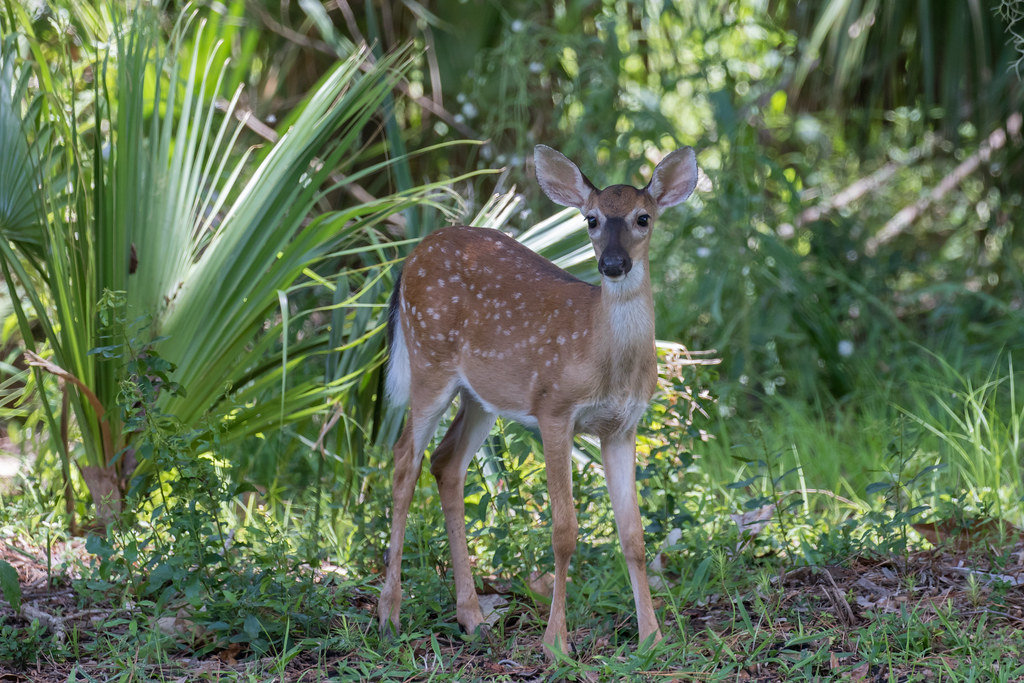 Deer
Deer
White-tailed deer and fallow deer roam the maritime forests of St. Simons and Jekyll Island. The deer range from dark brown to a spotted reddish tan, and they have enormous sets of flat antlers. The deer were brought to neighboring Little St. Simons Island in the early 1900s. In addition to their looks, they had the ability to swim and made their way to St. Simons Island, where they have multiplied. They have also been spotted on Jekyll Island and in mainland Brunswick.
Diet: Herbivores
Group Name: Herd
Average Lifespan: 6 to 14 years
Size: 6 to 7.75 ft
Weight of Adult Deer: 110 to 300 lbs
For more information on white tail deer visit nationalgeographic.com
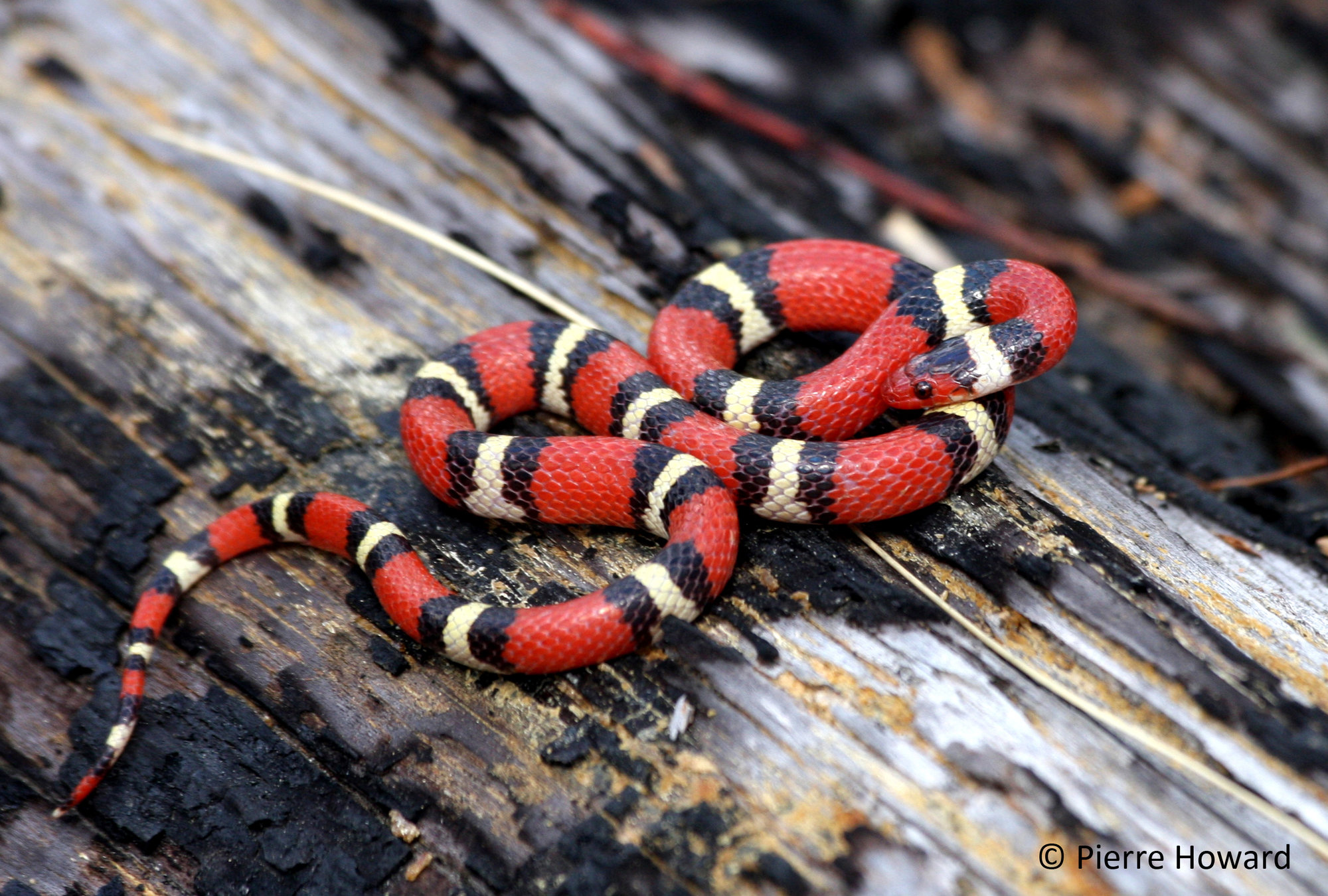 Snakes
Snakes
Scarlet Snakes are the only snake species on Little St. Simons Island that is considered nocturnal, which is usually the only time they are observed moving on the surface of the soil or substrate. These snakes are semi-fossorial, spending most of their time underground.
Snakes found in the Golden Isles:
• Eastern Ribbonsnake
• Cottonmouth
• Eastern Diamondback Rattlesnake
• Eastern Garter Snake
• Timber Rattlesnake
• Eastern Rat Snake
• Corn Snake
• Common Kingsnake
• Scarlet Snake
• Rough Greensnake
• Banded Water Snake
• Ringneck Snake
• RedbellySnake
• Southern Black Racer
• Coachwhip
